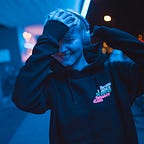Journalism in cartoons?
Monday, October 2, 2017
As a true believer in the power of journalism, I often thought of how hard it is to get the attention of today’s busy, highly segmented and digitalised audiences. So, when came across and got more familiar with such alternative journalistic medium as cartoon journalism, or editorial cartooning, it was quite an interesting exploration. Images, sometimes with few words or only a title, can feature more persuasive storytelling than a 300-word article. Usually presented in sarcastic tones, cartoons and comics are created for a historical record, and to address complicated political issues in a simultaneously humorous and provocative way. As it is concluded by the Ohio State University, although, editorial cartoons are not always funny, and humour is just the tool that might be utilised (https://hti.osu.edu/opper/editorial-cartoons). Neither they are innocent. The horrific example of inflaming effect this journalistic form can have was the shooting of Charlie Hebdo newspaper’s journalists in Paris in 2015, provoked by the offensive content about Islamic leaders they published (https://www.theguardian.com/world/2015/jan/07/charlie-hebdo-shooting-paris-magazine-target-raid). The cold-blooded event sparked numerous debates and controversial opinions. Without mentioning the dreadfulness touching upon the line of ethics in journalism, that, I personally believe, was more than just ‘crossed’.
Last year I heard of the community of journalists, called VJ Movement. Its co-founder Professor Thomas Loudon, was giving a workshop about journalism during one of the faculty’s Career Days. He shared some of his experiences of being a Dutch video journalist working from Iran, Iraq, Afghanistan, Egypt and Jordan. While working in the field, he was meeting and having conversations with journalists from other countries. Even when covering the same event, journalists had different perspectives or ‘truths’ of the same facts. He came to the conclusion that reasons for that were different backgrounds and editorial priorities the fellow journalists had. That led him to an idea of founding a new platform that would gather reporters from diverse backgrounds to provide more balanced reporting. Believing that there is no such thing as ‘objectivity’ in journalism, the founders agreed on the international editorial team producing video- and comic journalism as a solution.
That is how The Cartoon Movement was established, the journalistic initiative that aims to become ‘The Internet’s #1 publishing platform for high-quality political cartoons and comics journalism’ (https://www.cartoonmovement.com). It is the international community of the editorial cartoonists, publishing satirical images on political topics. It is also a great example of a creative approach to visual journalism, where within a single, or a series of illustrations, a broad context of important political events is given. With the motto: ‘There is more than one truth’, the platform aims to show different perspectives of a single news story.
The motto of the community made me think of the Boykoffs’ (2004) article on balance as bias, and that the authors would complement this online initiative to uncover difficult topics critically and by a variety of voices. When the authors featured the case of information bias in the coverage of global warming in the prestige press, they point out the pitfall in presenting the scientific arguments equally, whereas the ‘uncertainty’ side of the global warming was in fact unequal, as fabricated by the government and companies with the carbon-based interests (p. 133).
It is really visible that the technologies today re-construct the ways how the views and information are being exchanged, evaluated and prioritized, and how the audiences form their opinions (Lloyd & Seaton, 2006). Witschge & Nygren (2009) call the journalistic work as a ‘profession under pressure’, and argue that in today’s digital information era, journalists are pressured by the market, editorial control, and differentiated audiences to produce quality content (p.54). That often leads to homogenized, or ’copy-paste’ news stories, representing only one side of the story or fabricating the journalistic balance. Acknowledging these pressures of the profession, VJ Movement attempts to provide a variety of perspectives, with its international team of reporters in the ‘newsroom’. Moreover, producing videos and political cartoons, they attempt to demonstrate critical reporting of the complex issues to the public.
What are your thoughts on visual journalism? Do you ever follow/watch the political cartoons works, or read special cartoon magazines? Are they more entertaining, or educating for you?
Boykoff, M. T., & Boykoff, J. M. (2004). Balance as bias: global warming and the US prestige press. Global environmental change, 14(2), 125–136.
Lloyd, J., & Seaton, J.. (2006). What can be done? Making the media and politics better.
Oxford: Blackwell.
Witschge, T. & Nygren, G. (2009) Journalistic Work: A Profession Under Pressure? Journal of Media Business Studies, 6 (1), 37–59, DOI: 10.1080/16522354.2009.11073478
